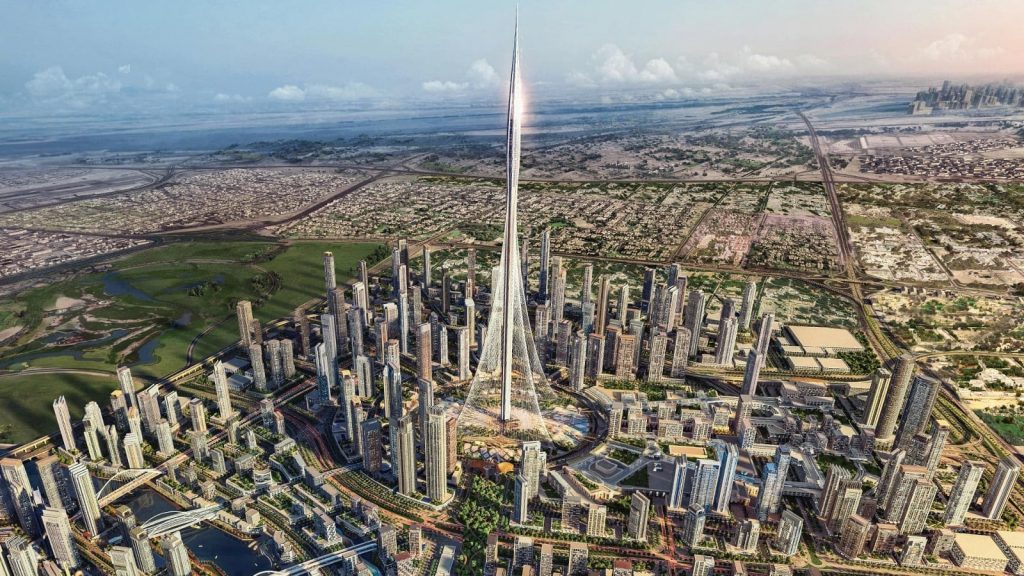
Another civil engineering marvel in Dubai? Well, why not for a city that knows no limits to ambitious projects. Initially, the Dubai Creek tower was intended to be the tallest man-made structure in the world, surpassing the height of the Burj Khalifa. However, plans were changed and now it will be just a bit shorter, but still one of the tallest towers ever built in history.
The design of the tower, completed by world-renowned engineer and architect Santiago Calatrava, infuses art, culture and innovation to the tune of Islamic architecture. His design was chosen over 6 international competitors, because it reflected a balance of cultural heritage, technological innovation, and artistic expression.
The design of the tower draws inspiration from traditional minarets and the lily flower. It will be connected to the ground using strong thin cables which will also provide structural stability and add to the unique architectural and artistic feel.
Although it has been through several changes and revisions, it is scheduled to be built, as construction started in 2024.
The top of the tower will have an oval-shaped bud housing ten observation decks, including the luxurious Pinnacle Room, offering 360-degree panoramic views of the Dubai skyline, Ras Al Khor Wildlife Sanctuary, and beyond.
Dubai Creek Tower stands in the heart of Dubai Creek Harbour, 8 kilometers east of Burj Khalifa. It will probably be more prestigious than Downtown Dubai. Spanning 6 square kilometers, the area is three times larger than Downtown and will include luxury residences, waterfront promenades, retail hubs, and cultural institutions. It will be a major tourist attraction.
The vision for the tower stemmed from Mohamed Alabbar, founder of Emaar Properties, who wanted to create a structure symbolic of progress and one that would contribute to economic growth. The tower will house multiple high-level events and exhibitions, and other sections will have a retail Centre, auditorium. Certain floors will be dedicated to hotels, gardens and restaurants.
Materials such steel cables, reinforced concrete spine will be used to construct the building. The use of advanced technologies, energy efficient-efficient systems, cooling system among other innovative ones will be employed.
After the ground-breaking in 2016, the foundations of the building were complete during 2017–2019. During this period, designs were still undergoing some changes. However, due to Covid in 2020, work had to paused. Construction resumed in March 2024, after the final height was revised.
- Subscribe to Our Newsletter: Stay updated with the latest insights, tips, and innovations in civil engineering.
- Check Out These Must-Read Resources:
- A comprehensive book on civil engineering to enhance your understanding of structural design and construction techniques.
- A captivating book about the lives of great civil engineers, showcasing the pioneers who shaped the modern world.
- A practical project inspection checklist—an essential tool for every engineer involved in site supervision and quality control.
- Dive into the genius of the Renaissance with our recommended book about Leonardo da Vinci, exploring his contributions to engineering and architecture.
- Don’t miss our field notebook and journal, designed specifically for civil engineers and architects to document projects, ideas, and on-site observations
No responses yet